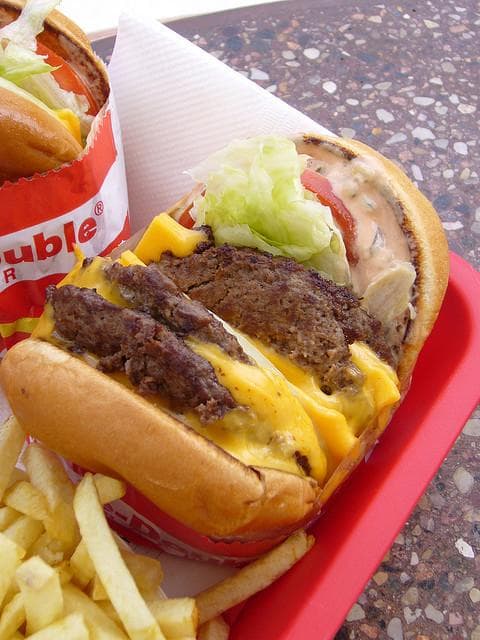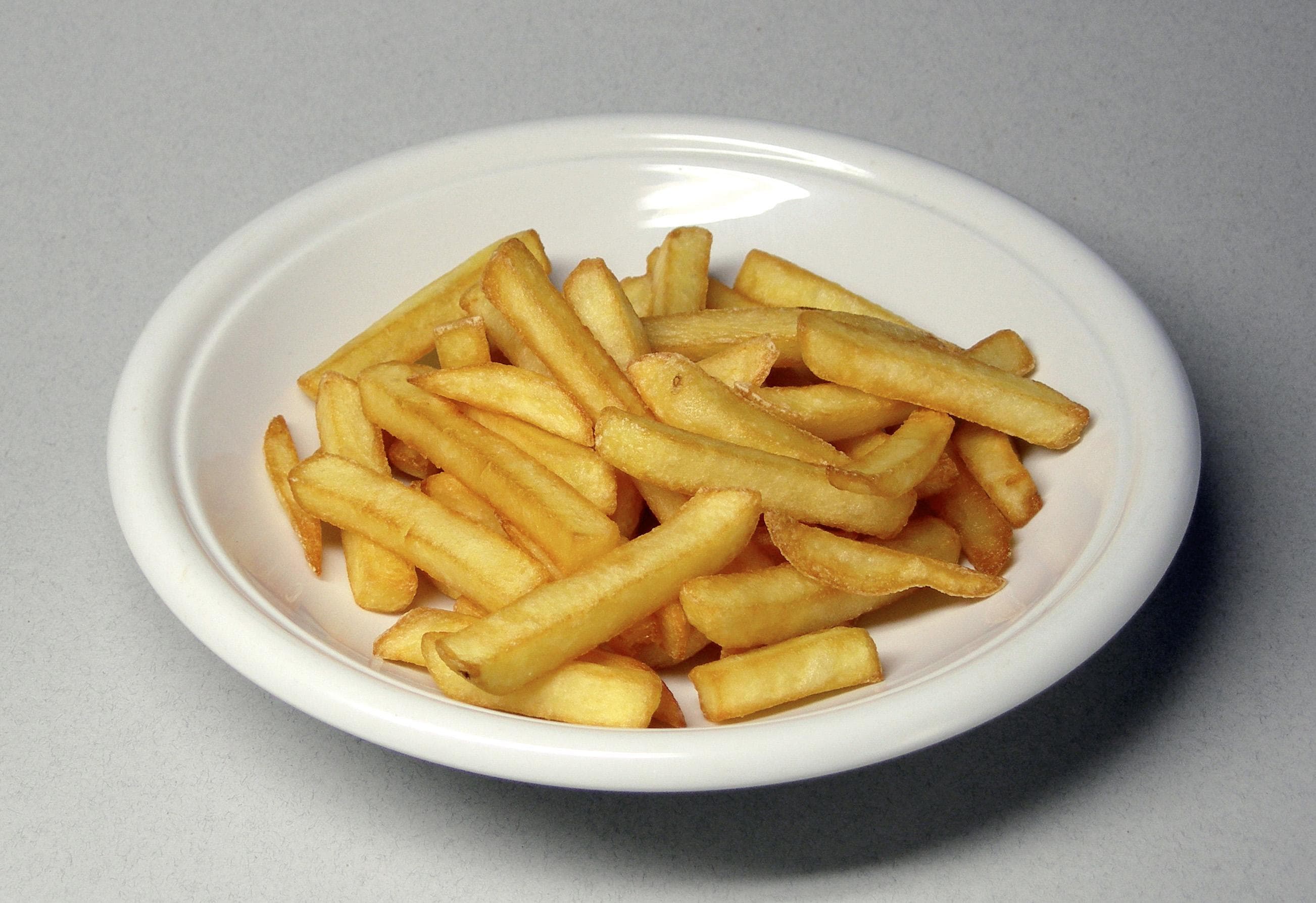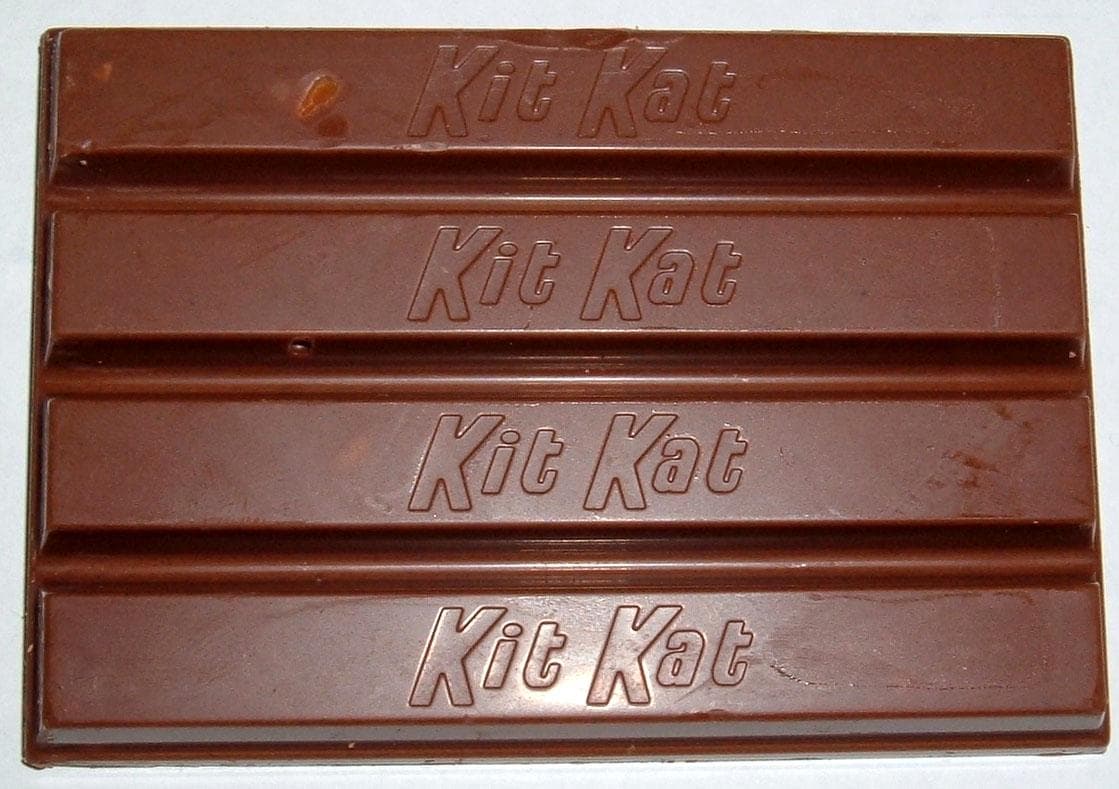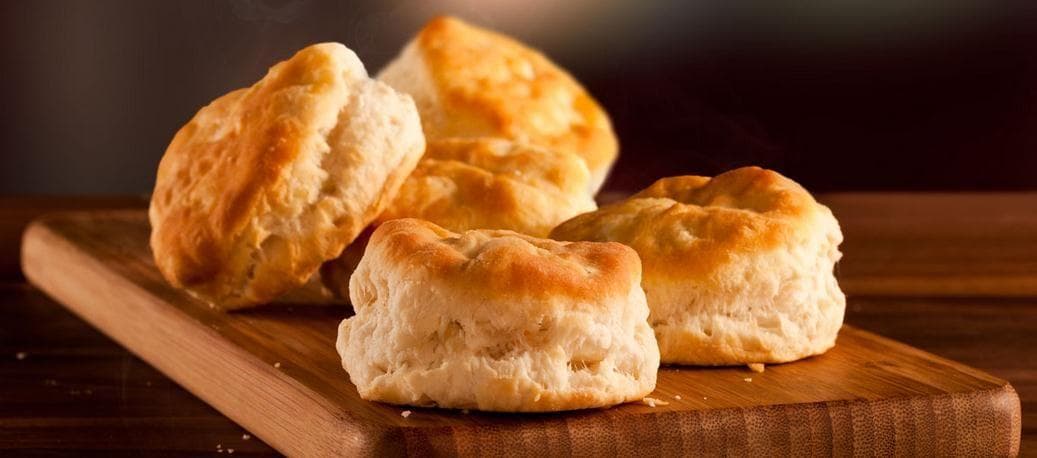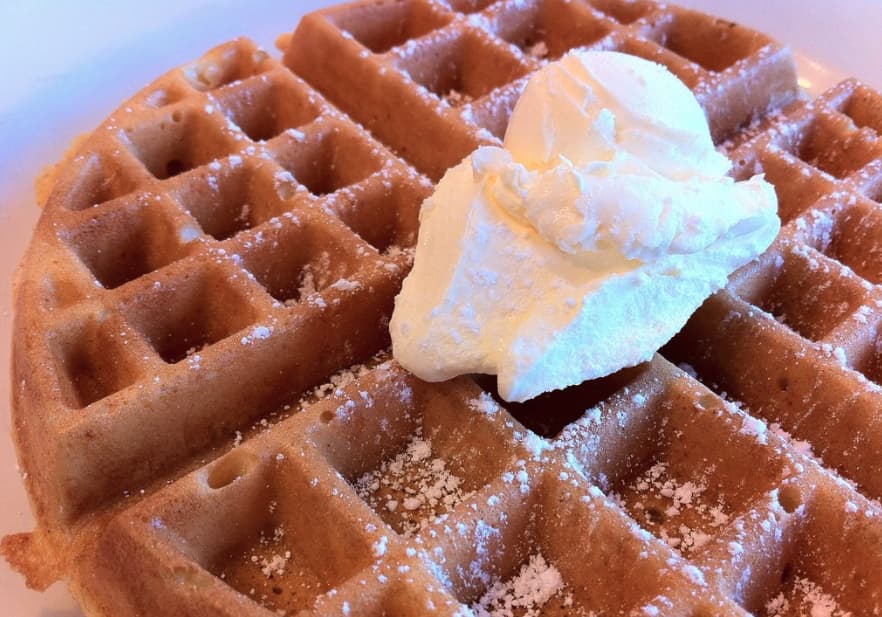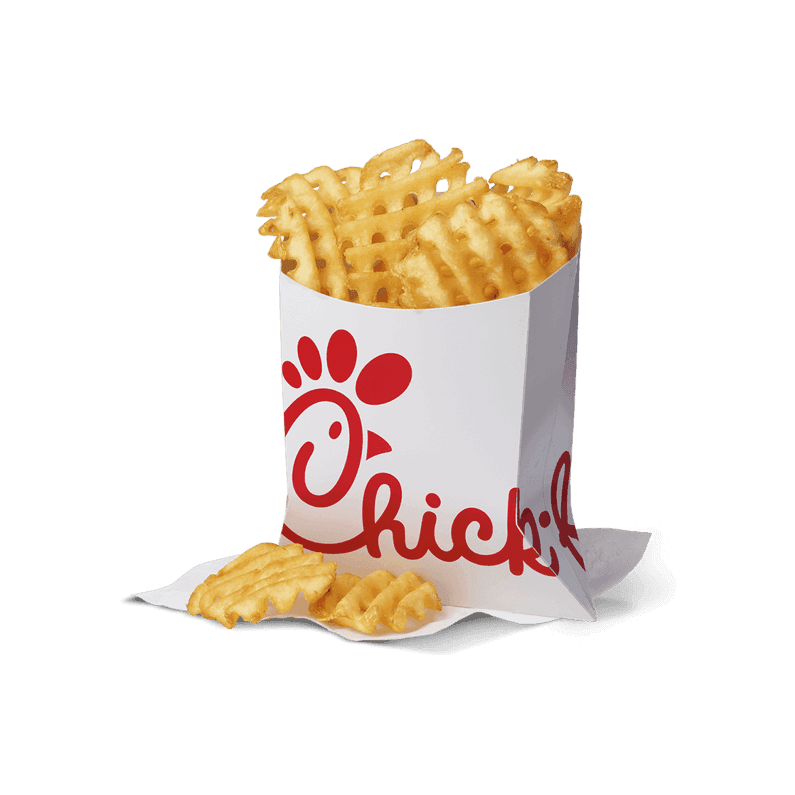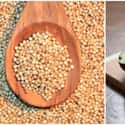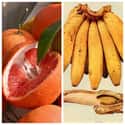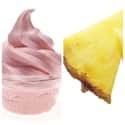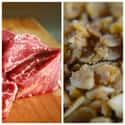-
(#5) 1940s: Rationing, Lemon Juice, And Cayenne Pepper
Rationing played a heavy role in the foods people around the world ate during the 1940s. Limited by what was grown in one's garden, meals were made without meat, sugar, eggs, and other resources once eaten in abundance. A more plant-based diet lined up with the discovery of the Mediterranean diet during the 1950s, an eating plan that embraced lower fat content combined with less meat and dairy and more grains, fruits, and vegetables in the interest of reducing heart disease.
There were food trends that claimed to detoxify the body, most notably the lemon and cayenne pepper cleanse introduced by Stanley Burroughs in 1941. The master cleanse, as it was known, included "the juice of one-half lemon or whole small lime... and two tablespoons of sweetening to an eight-ounce glass of medium hot water." Molasses was primarily used as a sweetener because of its laxative effect, but maple syrup and sorghum were also options. The next step involved adding cayenne pepper to give it "an additional lift and... break up mucous and stimulate increased elimination of the toxins."
Burroughs touted the mixture as a cure for illness, something that could give the digestive system a rest, and a means to weight loss. Burroughs advocated trying the diet a few times a year, with periods of use up to 40 days as needed.
-
(#12) 2010s: Gluten-Free Everything, Quinoa, Paleo, And Avocado
Within the 2010s, food trends increasingly geared towards what is left out of food rather than what is in it. Gluten-free diets emphasize having foods that don't have gluten, a protein found in grains like wheat, rye, and barley. Gluten can be particularly problematic for individuals suffering from celiac disease and wheat allergies, but many people believe it has connections to other ailments, such as depression and obesity. There's little scientific evidence to support the latter claims or that a gluten-free diet promotes weight loss, but the research community is still investigating and discovering more about this protein.
The gluten-free trend has pushed consumers and healthy eaters to different foodstuffs, most notably quinoa. The grain originating in Peru, Bolivia, and other parts of South America has been eaten for centuries but only relatively recently became popular in North America. Quinoa is high in fiber and protein and considered an incredibly versatile superfood.
There have also been diets that advocate avoiding carbs and grains altogether. The paleo diet, another low-carb eating plan, is based on what people are thought to have eaten 2.5 million to 10,000 years ago during the Paleolithic era. Also called the Caveman Diet, it is largely composed of nuts, seeds, fruits, vegetables, and lean meats; the diet leaves out processed foods, dairy, and other products that came about from the cultivation that began during the Neolithic period.
Avocados have also seen a surge of newfound popularity, as avocados are full of healthy fats. When it comes to consumers and healthy eaters, even those who don't eat like ancient humans, avocados provide a low-sugar, nutrient-rich option that adds creaminess to smoothies, makes for a good snack, and can be used in a variety of dishes.
-
(#4) 1930s: Grapefruit, Bananas, And Seaweed
The grapefruit diet, a fad that has reappeared several times in history, was practiced as early as the 1930s. Also known as the Hollywood diet, the eating plan was thought up by William H. Hay who believed grapefruit contained fat-burning enzymes. Hay's diet called for proteins, fats, and starches to be eaten separately but also limited the types of foods people could eat. As a low-calorie food, grapefruit was also high in vitamin C and fiber, making it an ideal staple food for losing weight.
During the 1930s, bananas took the United States by storm. Companies like the United Fruit Company (better known as Chiquita) sold their fruit as a nutritious and delicious food that was good for people of all ages, later going so far as to instruct people how to store and eat them. In 1934, bananas were combined with milk for a doctor-approved anti-diabetes diet, one that was low in calories but failed to give people enough nutrients to survive.
Other low-calorie diets featured seaweed and a drink mix that combined powdered protein with chocolate, starch, wheat, and bran. Called Dr. Stoll's Diet Aid, the product was one of the first diet drinks to enter the market.
-
(#9) 1980s: Pineapple, Lean Cuisine, And Frozen Yogurt
The 1980s was the decade of low-fat food. Frozen yogurt, Lean Cuisine meals, and artificial sweeteners became more and more prevalent in the marketplace and in kitchens as people looked to lose weight. Considered healthy, low-fat items were thought to reduce heart disease and lead to thinner bodies, often supplementing fat with carbohydrates and synthetic substances. To make fat-free foods taste better, sugar and salt were added in abundance. Though in retrospect these fat substitutes were still unhealthy, it wasn't known nor apparent until decades after.
During the 1980s, there was a proliferation of healthy frozen meals, everything from Lean Cuisine to Healthy Choice. Snack foods like rice cakes increased in popularity, and frozen yogurt brands such as TCBY emerged to meet the needs of healthy food fans everywhere.
There were also fad diets, including the pineapple diet, a detox eating plan where individual eat mass amounts of pineapple for three days. Advocates of the pineapple diet claimed it was sexy; in a book written in 1970 by Danish psychologist Sten Hegeler, aptly called The Sexy Pineapple Diet, he insisted that eating nothing but fresh pineapple two days a week led to weight gain and a stronger "sexual capacity." There were, however, not so sexy alternatives to the diet, like the pineapple and tuna diet.
In 1981, Judy Mazel claimed that eating pineapple dissolved fat. As part of her Beverly Hills Diet, Manzel also called for eating only fruits, even if it meant eating five pounds of grapes in one day.
-
(#6) 1950s: Cabbage Soup And Apple Cider Vinegar
The cabbage soup diet may have appeared before the 1950s, but after that decade, it continued to enter the fad food landscape every few years. Called many things, including the Dolly Parton Diet and the Fat Burning Diet, the cabbage soup diet was intended for short-term weight loss. Individuals ate as much cabbage soup as they wanted alongside limited amounts of fruit, vegetables, meats, and grains. The diet lasts one week and is meant to limit calories for a 10- to 17-pound weight loss.
Another healthy food that claimed to cleanse the body and cure ailments was apple cider vinegar. Again, not an original concept - Lord Byron touted apple cider vinegar as a weight loss tool during the early 1800s - apple cider vinegar found new life in D.C. Jarvis's book Folk Medicine, which was published in 1958.
-
(#8) 1970s: Red Meat, Granola, And Amino Acids
The Atkins Diet, developed during the 1960s by cardiologist Robert C. Atkins, grew in popularity during the 1970s. In general, red meats were more popular during the 1970s, something that only declined once more scientific data linked red meat to cardiovascular disease and cancer.
Another healthy food trend involved the idea of "natural" eating. Items associated with organic food and the West Coast led to foods like granola becoming incredibly popular. Sweetened with honey and full of nuts, seeds, and other natural ingredients, granola offered a seemingly healthy alternative to processed snacks, cereals, and the like. The desire to eat more healthy led to the rise of salad bars and an ever-growing diet soft drink market.
One more diet that emerged during the 1970s emphasized the importance of amino acids - only they were contained in Dr. Siegal's Cookies. Dr. Sanford Siegal developed a restricted calorie diet made up of special cookies that contain a blend of amino acids that allegedly reduce food cravings. His hunger-control cookies are still for sale.
It was said Elvis Presley was a fan of Sedation dieting, or the Sleeping Beauty Diet, in which a person is put into an unconscious state for periods of time to avoid eating. Along with fad diets was the rise of diet pills. Pills like Dexatrim, developed in 1976, included ingredients such as ephedra and other stimulants to suppress the appetite and boost energy.
New Random Displays Display All By Ranking
About This Tool
As we all know, nuts are healthy food. But many people still think that nuts are high in calories and fat. In fact, most of the fat contained in nuts is unsaturated fatty acids, which are good for the heart and are not easy to gain weight. Among the many snacks, nuts have always been one of the healthy snacks recommended by nutritionists. Nuts are generally divided into two categories, seed nuts, and tree nuts.
Nuts are the essence of plants, with comprehensive and rich nutrition. More and more healthy nuts are popular all over the world. There are random 12 healthy nuts in every decade since the turn of the 20th century.
Our data comes from Ranker, If you want to participate in the ranking of items displayed on this page, please click here.



